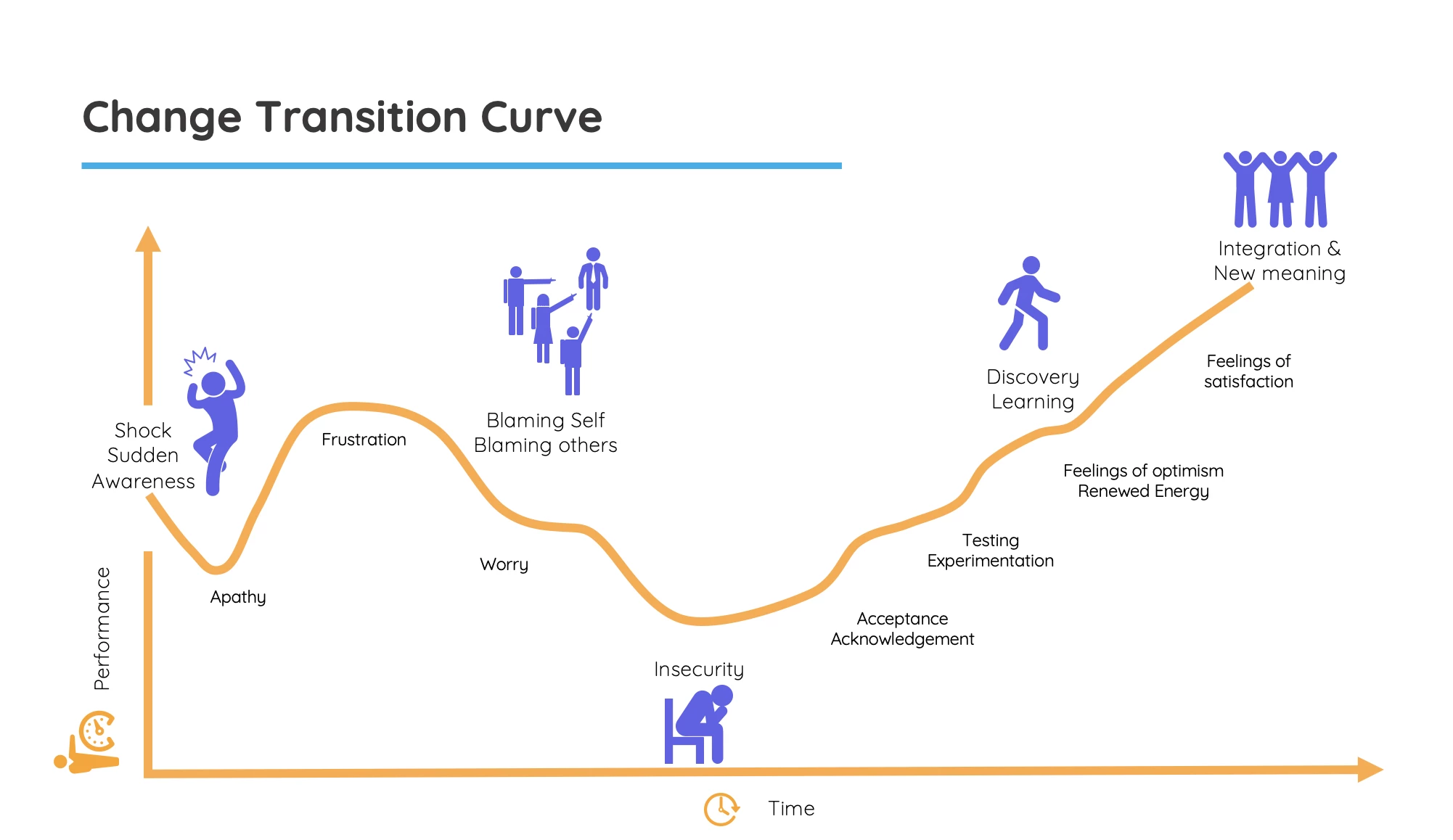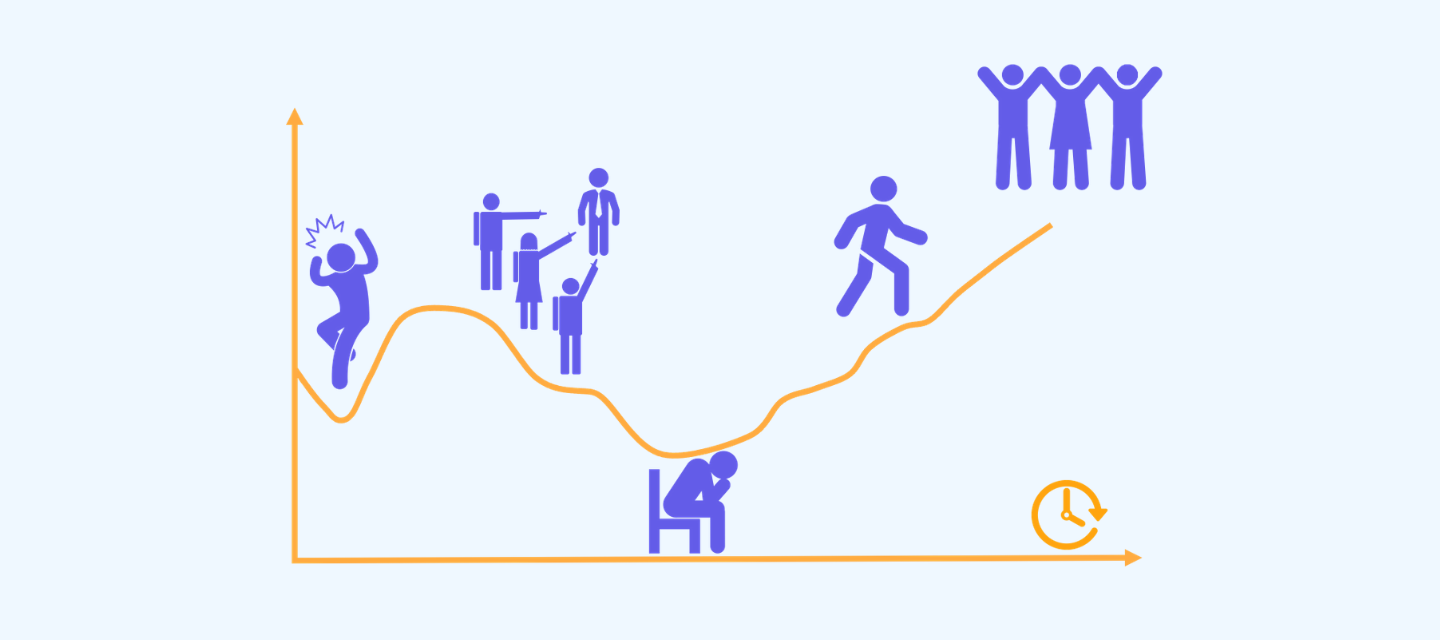Change Curve
In 1969 Elizabeth Kubler Ross, a psychiatrist developed the Change Curve as a way of illustrating the emotional range of bereavement. Over the years, the Change Curve has been adapted and is now commonly seen in business management, as a way to predict how stakeholders will feel during a change project. Knowing, understanding, and normalizing feelings can accelerate change adoption and increase your successful business outcomes.
As a Leader, being able to predict how people react allows you to support them, by giving them the right resources. So how do you start?

Stage 1: Shock or Denial
Like grief, the first step is shock or denial. Once the reality that change is happening sets in, people move quickly into negativity, which is often anger.
What can I do?
Why do people feel this way? They are often lacking information about the change and have a fear of the unknown. They are also personally worried about looking stupid, not adapting fast enough, or being unable to learn a new skill.
- Acknowledge the fear. Come prepared to this stage with your organizational message, WHY the organization needs to change and individual team WIFIM (what’s in it for me) statements.
- Pace your information and communications and don’t overwhelm anyone, but DO repeat your message.
Stage 2: Disruption
Fear and anger, seeded in Phase 1 take over and your vocal detractors surface. If not handled well, this can create a momentum where rumours swirl, and the project could be damaged. Blame and insecurity are also normal.
What can you do?
- Plan and prepare for this resistance. Ask the detractors why they are so uncomfortable and create a feedback loop. Are the feelings valid? Is the team lacking information or detail?
- Let employees speak in groups, even providing their feedback in groups. Connecting with peers can provide reassurance.
- If you have not already engaged change champions at every level of the organization, this is your time to do that.
Stage 3: Exploration
With information and support, people will begin to adapt to the change, led by the Early Adopters. As uncomfortable feelings are transformed into hope, people will start to demonstrate success. Not everyone adapts to change quickly, so progress will begin to develop speed gaps.
What can you do?
- Be patient with the slower individuals by offering reassurance and support. Everyone is on the change journey at a different pace and some people will be a bit further behind
- Have you communicated the project timelines? This helps motivate people and move them towards the organizational goal, without too much individual pressure.
- Are you still providing regular communication and praise?
- Rewards all the big and small milestones.
Stage 4: Rebuilding
This final stage is where the organization can start to see the benefits of the change and most people have jumped on board.
What can you do?
- Remember that you are still supporting the laggards.
- Continue to monitor the project, using your project champions to help facilitate feedback.
- Repeat and reinforce the concepts, as people easily fall from new behaviors back into old ones without the proper support.
- Praise! Praise the teams for their success and acknowledge the important role everyone had in the change.
Have you seen people react to change with these emotions? How did you deal with it? Please share some real-life examples with us.








